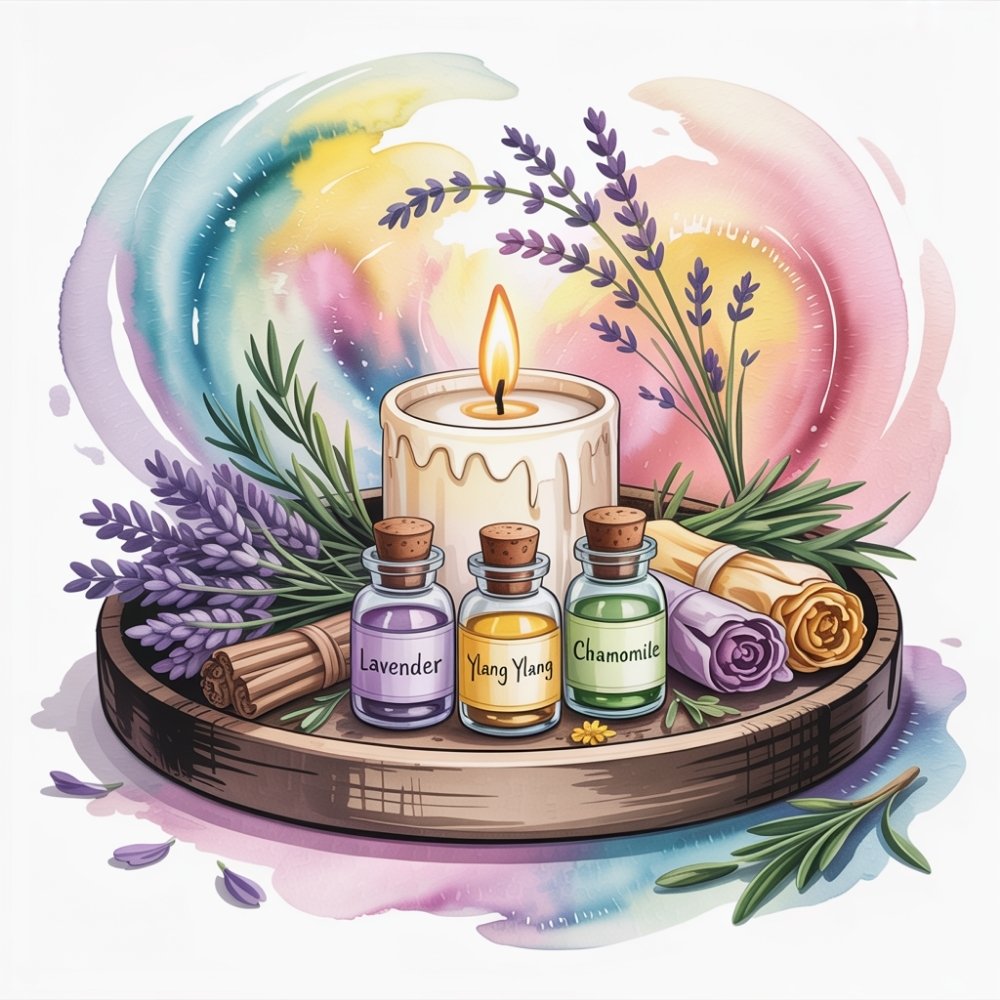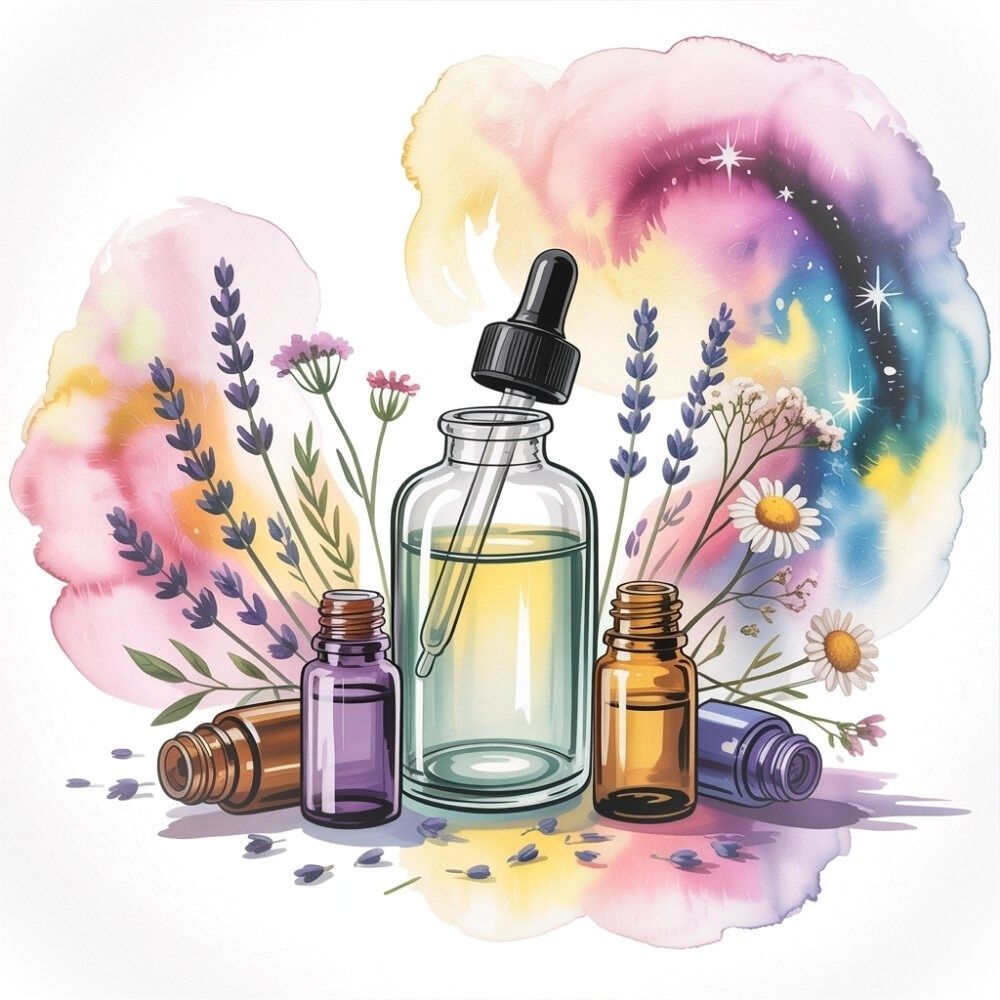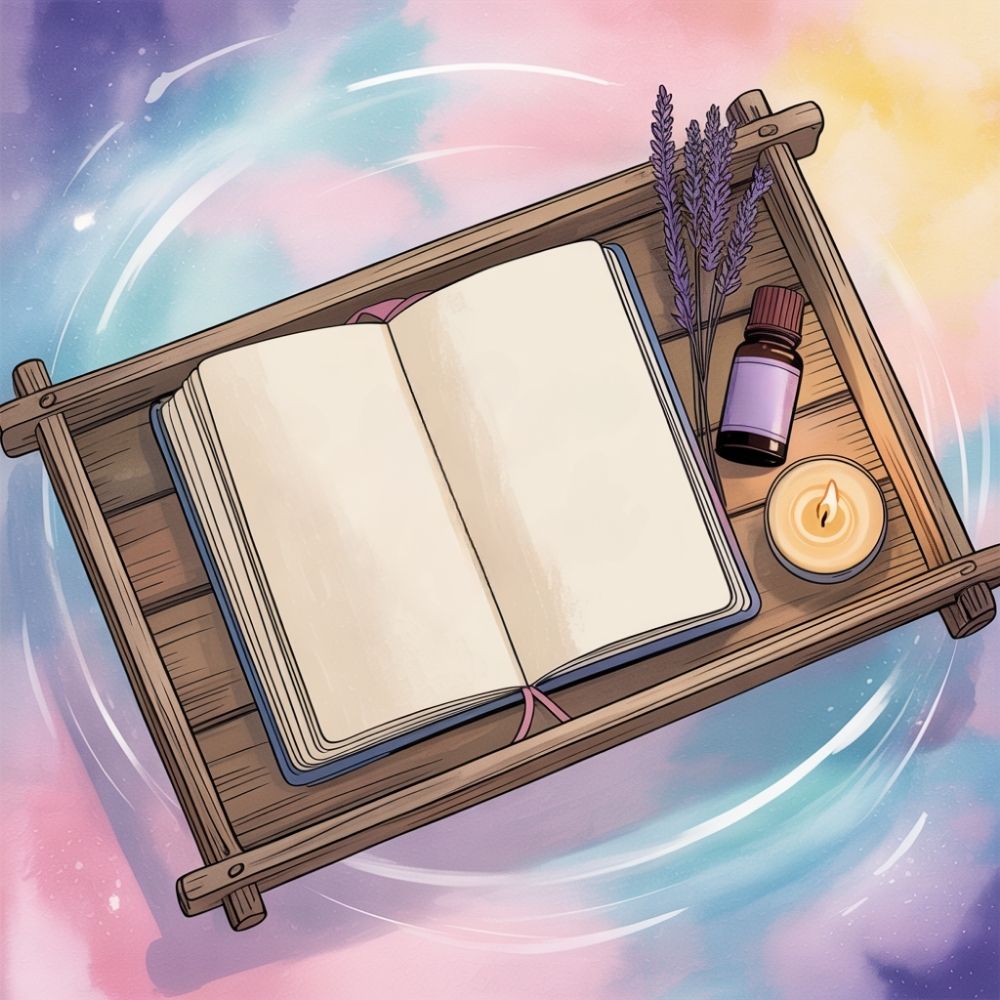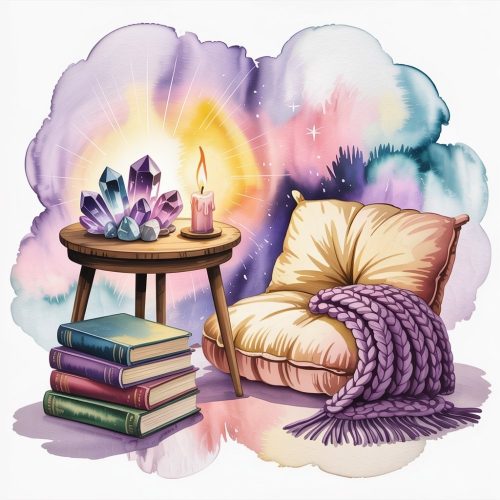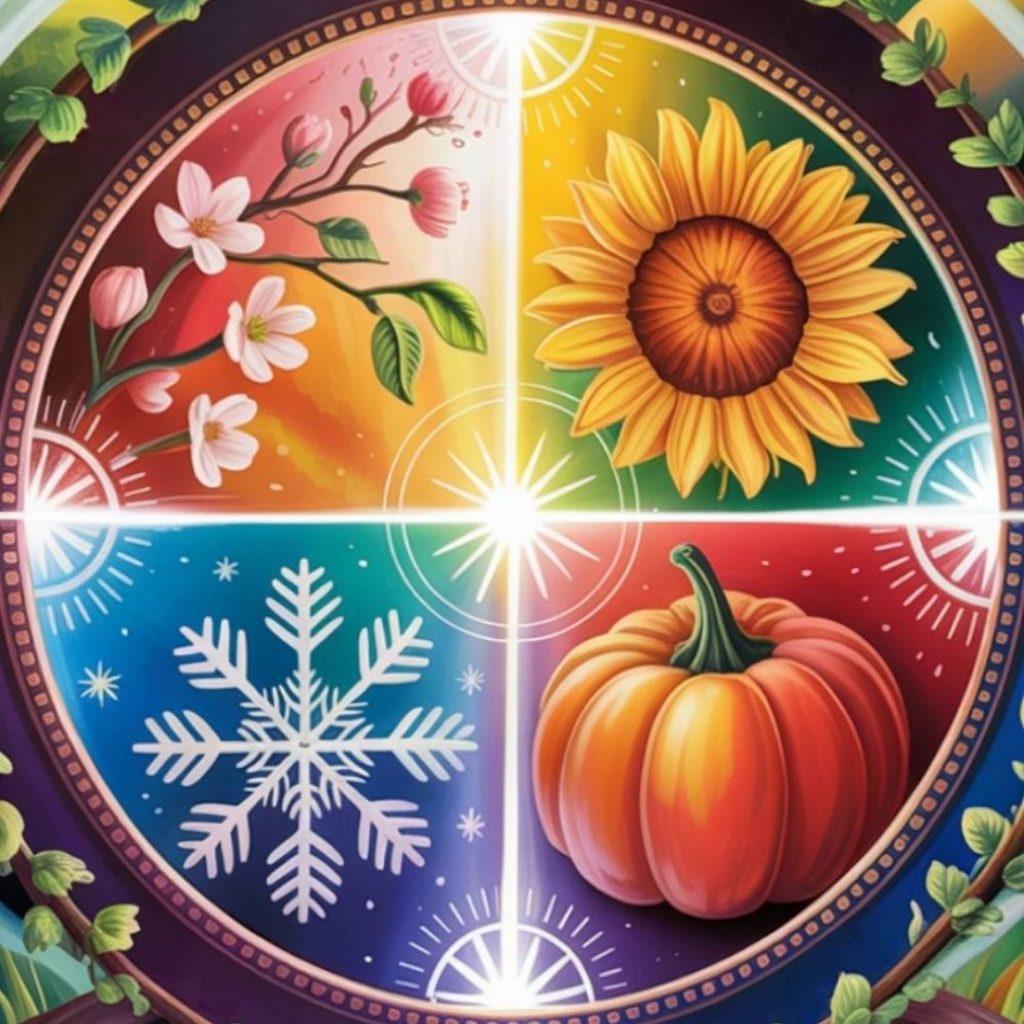There’s something enchanting about blending essential oils. Even after the years I spent working professionally with aromatherapy, I still feel a little like an alchemist each time I make a blend.
Whether you’re creating a candle for full moon rituals, a grounding oil to wear during journaling, or simply want your space to feel more like you, learning to mix your own blends can be a beautiful, empowering practice.
In this guide, I’ll walk you through how to choose your oils, how to balance a blend, and how to let your intuition take the lead. No prior experience needed, just a bit of curiosity and a willingness to follow your nose.
🌿 Step One — Begin with Purpose
Before you reach for any bottles, pause for a moment and ask yourself:
What do I want this blend to do?
Are you hoping to lift your mood?
Feel more grounded?
Find clarity before meditation or soothe your body before bed?
Once you’re clear on the feeling or energy you want to invite in, it’s easier to choose oils that align with your intention. Here are a few suggestions to get you started:
- Uplifting: grapefruit, bergamot, lemon, sweet orange
- Grounding: lavender, frankincense, vetiver, patchouli
- Sensual: ylang ylang, jasmine, sandalwood
- Focus and clarity: rosemary, basil, peppermint, eucalyptus
- Relaxing: chamomile, neroli, clary sage, sweet marjoram
Choose 5 to 7 oils that speak to your purpose. Trust your instincts, they often know what you need.
🔗What to get yourself a good essential oils reference book? Here are My top 5 recommendations
🌼 Step Two — Blending by Fragrance Note
One traditional method of creating an aromatherapy blend is to build your scent in layers, top, middle, and base. Each oil has its own evaporation speed, which affects how long it lingers in the air (and how the blend unfolds over time).
- Top notes: Light, fresh, uplifting — these are the first thing you smell, but they fade quickly. (e.g. lemon, grapefruit, peppermint, eucalyptus)
- Middle notes: The heart of the blend — soft, balancing, and harmonising. (e.g. lavender, rosemary, geranium)
- Base notes: Deep, grounding, and long-lasting. (e.g. patchouli, sandalwood, vetiver, myrrh)
When you’re first starting out a simple way to create a balanced fragrance is:
- 2 drops top note
- 3 drops middle note
- 1 drop base note
For example:
2 drops grapefruit (top)
3 drops lavender (middle)
1 drop patchouli (base)
From there you can play. Adjust the ratios, add in other oils, eg. 1 drop grapefruit, 1 drop orange, 3 drops lavender, 1 drop patchouli.
Breathe in your blend and see what calls to you.
Quick Tip:
If you want to avoid wasting oils on a blend that doesn’t quite work, try this first: hold all the bottles you’re considering in one hand and gently waft them under your nose. It gives you a quick sense of how the scents mingle before you start blending.
👃 Alternative Step Two — Follow Your Nose
These days, as I’m just blending for myself, this is the method I use: smell.
Start by smelling your essential oils and set aside any you’re really liking. Let your mood and energy guide your choices, your preferences will naturally shift depending on how you’re feeling. That’s part of the magic.
Pick 3 to 5 of the oils you’re really liking at the moment, hold them together and waft the scents gently. Do they blend well? Do any clash?
When you find a combination that feels good, start blending small test amounts. Let the oil you’re most drawn to lead, and allow the others to support.
Example:
4 drops grapefruit
2 drops geranium
1 drop cedarwood
Let your nose and intuition work together.
✨ Other Ways to Choose Oils
Here are some other ways to guide your aromatherapy blends:
- Chakra blending – Match oils to the chakra you want to support.
- Astrological influence – Create blends aligned with your sun, moon, or rising sign, or a current planetary energy.
- Journaling first – Write out how you feel, then choose oils that support, soothe, or balance that emotional state.
- Colour visualisation – Imagine the colour you want your aura to glow with. Pick oils that reflect or evoke that hue.
- Spiritual allies – Blend to honour a spirit guide, deity, or energy you’re working with. Let the blend be an offering or invitation.
🌕 How Much To Use? (Blending Quantities)
If you’re wondering how much of your aromatherapy blend to actually use, here’s a simple guide depending on your creation:
🕯 Candles
- As a rough guide, use 30–40 drops per 100g of melted wax, but check with your wax supplier for the maximum amount recommended, as too much fragrance can prevent the candle from burning properly.
- Add oils once wax cools to ~60°C to preserve the scent.
- Personally, I prefer coconut wax as it has a low melting point.
- Note: coconut wax needs a container (like a glass jar), since the whole candle becomes molten during use.
🕯 Wax Melts
- Use 20–30 drops per 50g wax.
- Add oils once wax cools to ~60°C to preserve the scent.
- Again, coconut wax is lovely here, and less mess-prone than candles.
🔥 Oil Burner
- Use 6–8 drops in water in the burner dish.
🛁 Bath Oil (with carrier)
- Use 5–10 drops in 1 tablespoon of carrier oil.
- (Never add essential oils directly to the bath as they need to be diluted!)
🛁 Bath Salts
- Use 10–12 drops per cup of salts.
- Mix first the essential oils with a little carrier oil or vodka first to help them disperse through the salt.
💆 Massage Oil
- Use 12–15 drops per 30ml of carrier oil.
- That’s a safe 2–2.5% dilution which is gentle enough for full-body massage.
🌙 Aromatherapy as Ritual
Creating aromatherapy blends is part art, part science, and part spellwork.
You might create a blend that smells like a forest at dusk, or one that feels like golden sunlight in a bottle. Some days you’ll reach for structure, balancing notes like a perfumer. Other days you’ll just follow your nose and trust your spirit knows what it needs.
However you approach it, blending is a ritual in itself. A pause, a deep inhale, a moment of creativity and self-care.
And even after all these years, a table full of essential oils still makes me feel connected to the past, like I’m an ancient potion-maker.
👉 Want a beautiful way to record your blends? I’m working on printable stylised paper for just that. You’ll find it [here soon].

